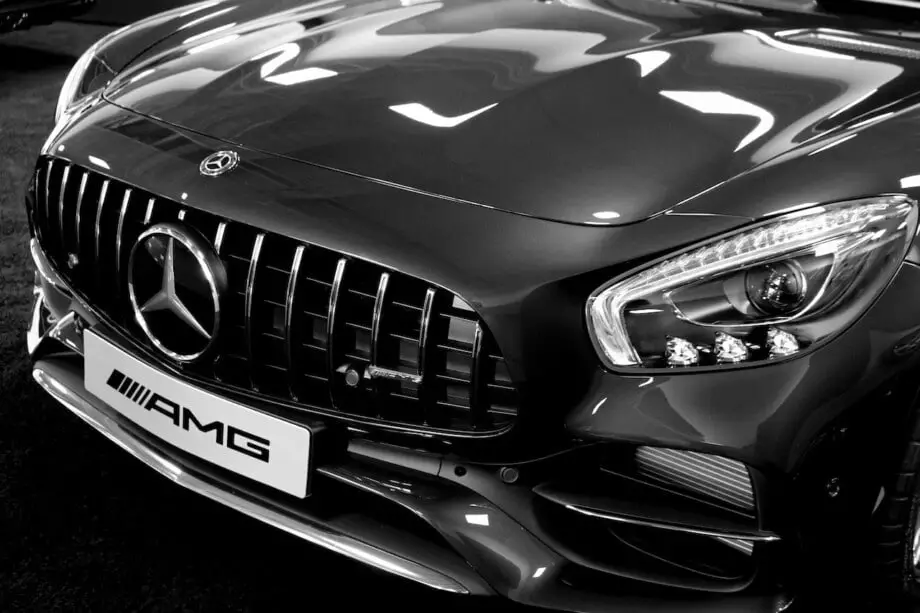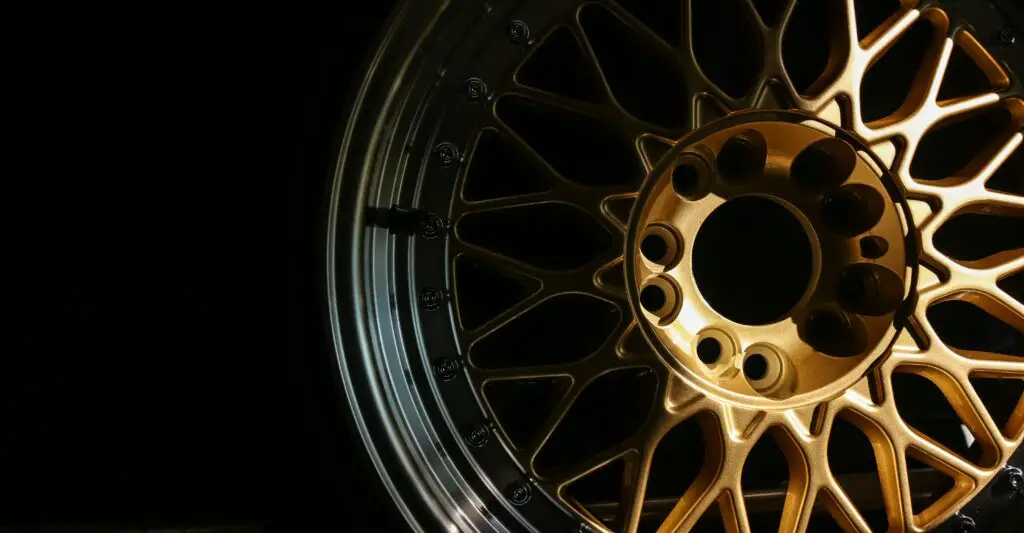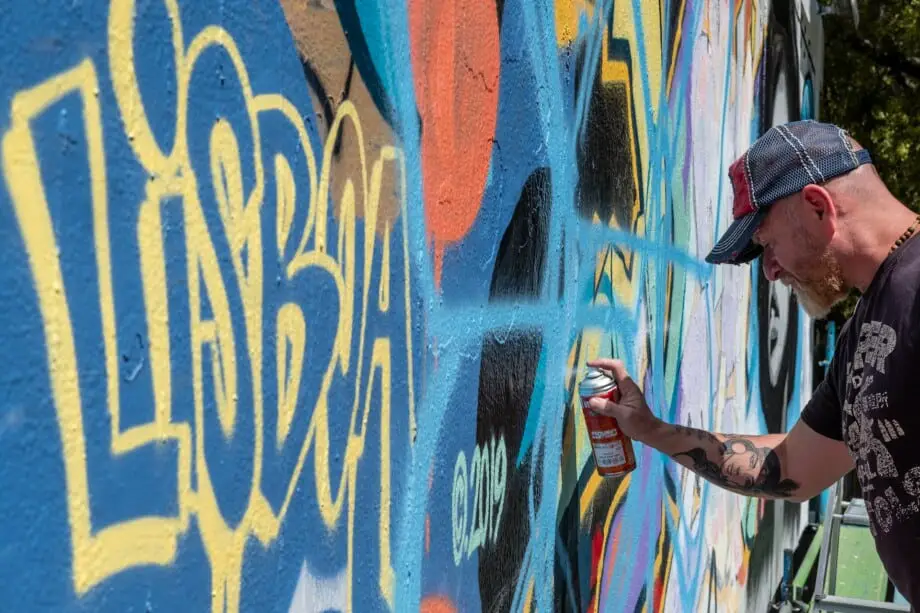Your car’s bumper witnesses its fair share of wear and tear when you’re on the road. From scratches to discolorations, there are several imperfections that ruin its appearance over time. Luckily, there is an easy way to hide the flaws on your car’s bumper and make it look as good as new: spray paint!
You can spray paint your car’s bumper and restore its original form without visiting an auto repair shop. Start by removing the bumper and cleaning it thoroughly. Strip the previous paint and sand the surface for an even base. Follow it with a primer and color coat before reattaching it to the car.
DIYs can quickly go south if you don’t prepare the surface you want to paint thoroughly. Remember to select a paint compatible with your bumper’s material and spray paint it following the correct procedure.
Can you paint a bumper without removing it?
Yes, you can paint your car’s bumper even without removing it, but you must ensure that all the surrounding areas are thoroughly covered. Simply secure the parts you don’t want to paint with some paper and painter’s tape.
Whether you remove the bumper or not- you must prep its surface for maximum paint adhesion.
Can you paint a plastic bumper?
Absolutely! Car bumpers are either made of metal or plastic; the good news is that you can find spray paints for both surfaces. However, you should check the material of your bumper before buying the color.
Painting plastic on your car is very different from painting metal parts. This is because plastic is more sensitive to chemicals; therefore, the paint that works on automotive bodies might not stick to plastic the same way.
Painting plastic car bumpers usually involve fillers and adhesion promoters, but the kind of filler you use will depend on the plastic your bumper is made of. You can check the material by removing the bumper and looking at the back for stamped initials.
The plastic types TPE and PP smear easily when machine-sanded, while PUR and TPUR will turn to powder if you sand them.
How to paint a metal car bumper
Before starting the preparation, ensure you’re working in a well-ventilated area. Take the bumper outside and work under the sun if it’s not too hot or cold.
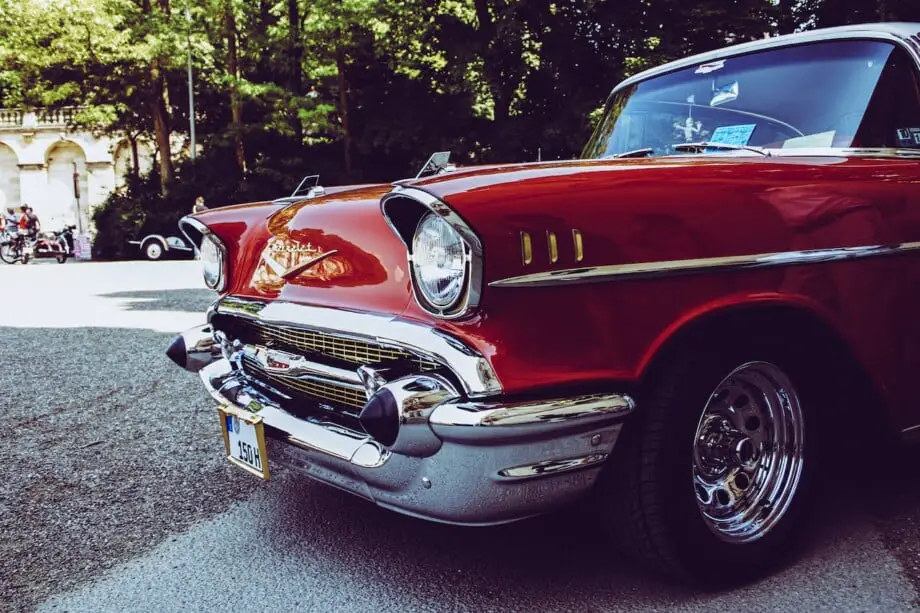
Step 1- Remove the bumper
You can prep the surface while it’s still mounted to the car, but we recommend removing the bumper to make the painting process easier.
Step 2- Clean the surface
Wash the bumper thoroughly with soapy water and a clean rag. Use microfiber towels to wipe the surface dry when you’re done.
Step 3- Strip the existing paint
Using a paint stripper, remove the existing paint from the bumper. Apply a layer of paint stripper and allow it to sit for 10 to 15 minutes. Once it has had time to soak into the paint, start scraping the paint with a plastic scraper. Keep going until all the paint is removed.
You can use any paint stripper designed for metal. The Smart Strip Advanced Paint Remover and Citristrip Paint & Varnish Stripping Gel are excellent options for this step.
Step 4- Sand the surface
Use 220-grit sandpaper to roughen the surface and remove any waxes, oils, or other residues.
Step 5- Wipe the bumper with mineral spirits
Take a lint-free cloth and soak it in mineral spirits to wipe the bumper thoroughly. We want the surface to be spotless for the primer and paint to adhere properly. Therefore, repeat the cleaning process until you’re satisfied with the result.
Step 6- Apply primer
Select a primer that works well on metal surfaces and spray a light coat on the bumper. Allow the primer to dry for 3-5 minutes before going in with another coat. It’s recommended to spray three to four layers of primer.
You can opt for the Rust-Oleum Automotive 2-in-1 Filler & Sandable Primer, as it creates a rust-resistant base coat for metal surfaces.
Step 7- Wet-sand the surface
Take 220-grit sandpaper and roughen the surface after the primer has dried completely. Remember to wipe the bumper with mineral spirits to remove any sanding residue.
Step 8- Apply paint coat
Using a back-and-forth motion, spray on a light coat of paint on the bumper. Allow the first layer to dry for 4-5 minutes before spraying on the next coat. Continue layering until you’ve sprayed at least three to four coats.
Step 9- Wet-sand the surface again
Wet sand the bumper’s surface again using 220-grit sandpaper. You can even use 1500-grit wet sandpaper for a smoother finish.
Step 10- Apply top coat
This step is optional and can be skipped if you like the rough look. However, if you prefer a glossy appearance, you can top off the paint with a clear coat for a high-shine look.
How to paint a plastic car bumper
Here is a step-by-step guide to help you achieve an excellent paint finish on your car bumper.
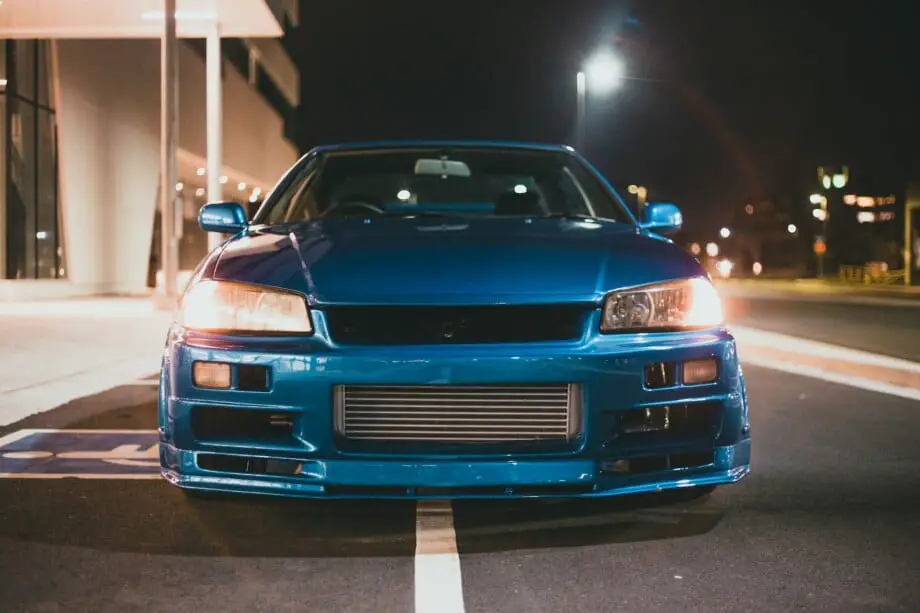
Step 1- Remove the bumper
You can paint your bumper if it’s attached to the car, but the process can get a little messy. That’s why we recommend removing the bumper for better results.
Step 2- Wash thoroughly
Wash the surface thoroughly with a degreaser and water. The idea is to remove any dirt or oil that may be stuck to your bumper. You can complete this step using a clean cloth and soapy water or a cleaner designed specifically for plastic surfaces, like the Mothers Surface Prep spray.
Step 3- Sand the surface
You may notice some damaged areas on the bumper that need fixing before the paint coat. Sand the entire surface on the bumper while paying particular attention to any cracks you find.
Step 4- Wipe the bumper clean
Using a clean microfiber cloth, wipe away the sanding dust from the surface. Clean the area further with some water to remove any traces of the surface cleaner. Use a dry towel to wipe the bumper at the end and leave it until it becomes completely dry.
Step 5- Fill in the cracks
Use a filler to fix the cracks on the bumper’s body. The type of filler you use will depend on the kind of plastic your bumper is made of. You can find the right one by asking for product recommendations at an auto repair store.
Mix the filler and hardener in equal amounts and apply them using a putty knife on the cracks. Use a generous amount because the filler shrinks as it dries, and you want to make sure the gaps remain filled when that happens.
Allow the filler to dry for 20 minutes before moving on to the next step.
Step 6- Sand the filler
Once the filler has hardened completely, sand it to a level using sandpaper. Begin with 80-grit sandpaper and gradually move to 120-grit paper. Finish the process with wet sanding and 400-grit paper to achieve a smooth finish.
Clean the surface using a rag cloth and remove any residue from the sanding.
Step 7- Apply an adhesion promoter
Painting a plastic surface is not the same as a metal surface; therefore, you need an adhesion promoter to ensure the spray paint stays on the bumper. You can use one compatible with plastic, such as the Universal Adhesion Promoter by U-Pol.
Apply a thin coat of adhesion promoter to create a solid base for the primer to stick to.
Step 8- Spray on the primer
Spray two to three thin layers of primer on your bumper’s surface. Hold the can about 12 inches away and spray using steady, sweeping motions.
The Rust-Oleum Plastic Primer Spray is ideal for plastic surfaces, including your car’s bumper.
Step 9- Sand the surface smooth
Wet sand the surface with 1500-grit sandpaper once the first layer of primer dries. Wipe away the sanding residue with a clean cloth.
Step 10- Repeat the above two steps
Apply another layer of primer and wet-sand it once it has dried. Repeat the process 2-3 times for an even finish. Remember to wipe the bumper with a clean cloth every time you sand it.
Step 11- Apply the paint in multiple coats
Allow the final coat of primer to dry for 10 to 20 minutes before applying paint to the bumper’s surface. Spray the color coat in thin and even layers, giving it adequate time to dry in between. It is recommended to wait 10 to 20 minutes after each layer, but you can refer to the instructions printed on the spray paint can’s label to determine how long you should wait.
The paint you select must be designed for plastic as the material has flexibility; therefore, a formula that works on surfaces like metals might crack on a plastic bumper.
Several finishes are available in the market, but you should choose the one closest to the bumper’s original color. The Rust-Oleum Automotive Enamel Spray Paint and the Rust-Oleum Automotive Paint for Plastic Spray are good options for this project.
FAQs
How much does it cost to spray paint a bumper?
A professional spray paint bumper cost can be anywhere between $150 and $1,000, but if you paint it at home, the supplies may cost around $150 to $300.
How long does it take to respray a bumper?
Repainting your car’s bumper at home should take you at most 3 days. However, you can speed up the drying time of the paint by tweaking the temperature around the surface.
How many cans of paint does it take to paint a bumper?
If you’re using 12 oz. cans, you will need 4 to 5 spray paint cans. It’s better to err on the side of caution and buy an extra one to achieve the best possible coverage.
Is it cheaper to repair or replace a bumper?
Replacing a bumper is definitely the quickest way to upgrade your car’s appearance, but it’s more costly than repairing it.
Can you spray black plastic bumpers?
You can spray paint your car’s black bumper using high-quality automotive paint designed for plastic surfaces. Remember to prep the area with sanding and priming before applying the black color coat.
Conclusion
What are you waiting for! Save your money by coloring your worn-out bumper or spray painting your entire car yourself than hiring someone else to do the job.
You can even experiment and try customization by spray painting your car’s hood as well.
All you need the right materials and processes to complete the project in a day or two.
